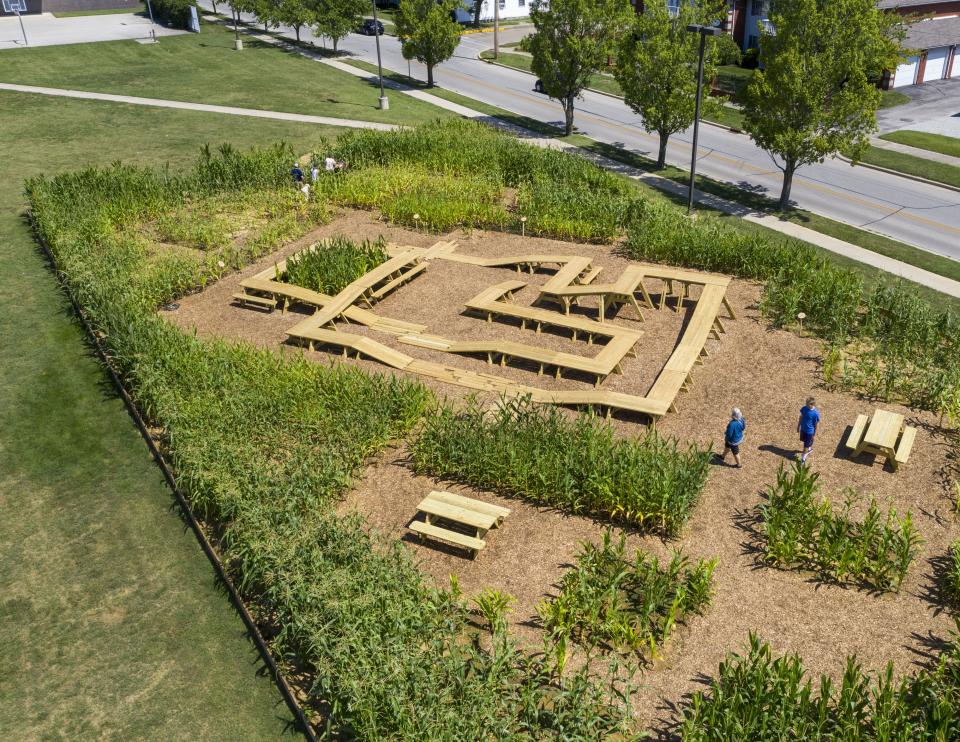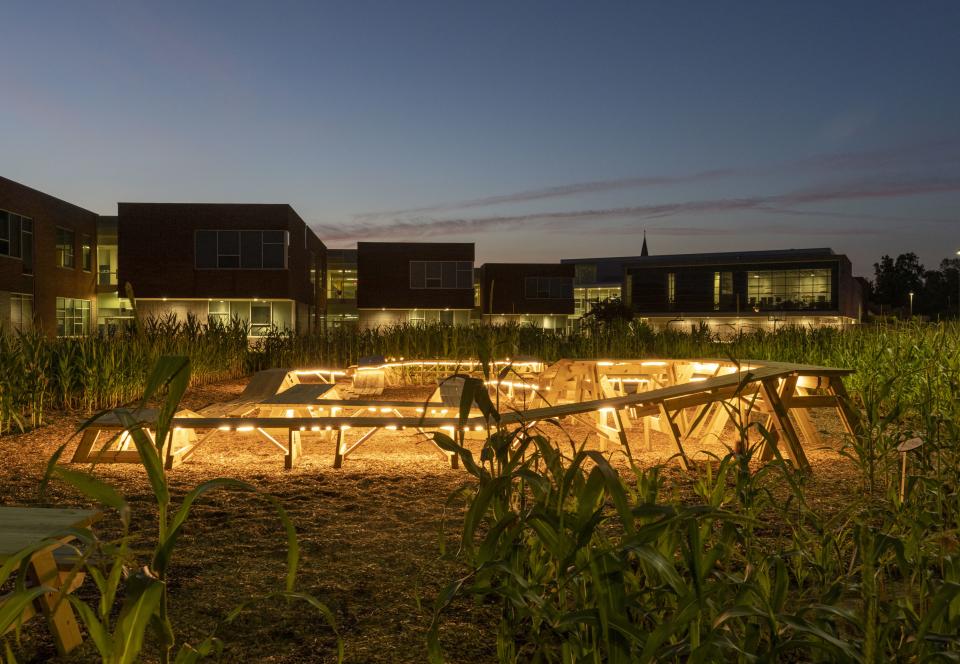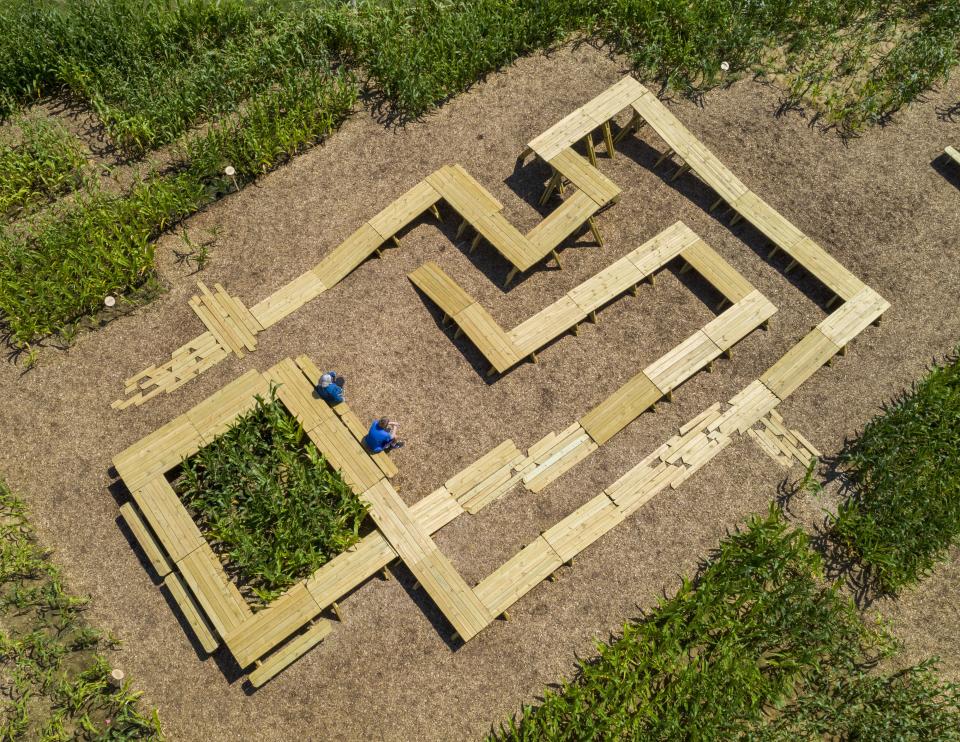Why MASS Design Group Created a Corn Maze in a Small Indiana Town
City-dwelling Indianans don't know much about the most popular crop in their Midwestern Corn Belt state, says Caitlin Taylor, a design director at MASS Design Group. So when the AD100 firm was awarded a J. Irwin and Xenia S. Miller Prize by Exhibit Columbus this year, an annual design program in Columbus, Indiana, and asked to create an installation in the town of 44,000 residents, it proposed something both familiar and foreign: a corn maze that gives a glimpse into the crop's production.

When one drives through Indiana, corn fields are a constant landscape: Twenty-five percent of the state is covered in the crop. But "corn is an unfamiliar context in the city," says Taylor, who heads the food systems design laboratory at MASS and is an organic fruit and vegetables farmer herself, in rural Connecticut. She designed Corn/Meal as "a way to bring to the foreground what is in the background, via proximity," noting that "surprise is the first step to curiosity." On view next to Columbus's Central Middle School (designed by Perkins + Will) through December 1, the 100-by-150-foot stalk maze is made up of five different corn plants with varying heights, representing the uses of the crop in Indiana—two kinds of edible popcorn, one for sweetener, and two kinds of industrial field corn. At the center, picnic tables create a gathering space for science teaching, community meals, and play. (The Future Farmers of America have hosted their weekly meetings here since the installation was implemented.) At night, the tables are illuminated from below, giving off an alien glow that is a playful allusion to the cult phenomenon of crop circles.

Weaving through the maze engages passersby, and placards within it give information on corn varieties, origins, and uses. While the crop seems ubiquitous, knowledge of its use is not. In reality, Indianans may never eat their state's own corn. Only one percent of the corn grown there is dedicated for human consumption. Most of the farmed plants are for animal feed (46 percent) and ethanol production (30 percent). Therefore, MASS Design Group's installation brings the corn to the people: "You touch them, you smell them, you watch them grow," says Taylor.

During opening weekend in late August, children climbed atop tables and chased one another through the stalks, which were grown from 10,000 seeds planted by local volunteers at the beginning of the summer. As temperatures drop and snow begins to descend on the town this fall and winter, the unharvested plants will wither and die. It's all part of the plan, says the architect: "The aging of the plants as the season changes is something that we built into the design process." Getting up close and personal to the full life cycle of a food system crop is important to the exhibit. And so is creating these opportunities for learning through design. Taylor's design group focuses on the "responsibility that designers and architects have to participate in the redesign and rebuilding of regional, just, and equitable food systems," she says, supporting a return to localism in food farming and consuming. "The global systems only get us so far. Radical transformation is not optional given climate change."
Originally Appeared on Architectural Digest

